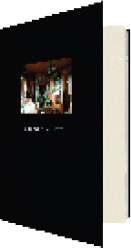Why is it that the best parts of the best poems about mourning have little directly to do with the humanness of grief—with the dead or the bereaved—but eddy instead around objects, fixate on things? Take the yew trees that cycle through Tennyson’s In Memoriam, for example, which the poet randomly thwacks at to assure himself that he is something other than a tree. Or the literal object-quality of Anne Carson’s Nox, a box of a book, which winds up being as much about how paint bleeds through paper as it is about translating Catullus or remembering a dead brother the author barely knew. Or Susan Howe, who named her elegy for her husband That This, collapsing the distance and nearness of things: that snowstorm, this whistling kettle. This snowy, that whistling. Snow kettle.
The intermingling of substances and moments, here one minute, gone the next, is bound together in the title of Thomas Meyer’s Kintsugi, which takes its title from a Japanese word that describes the mending of shattered ceramics with a lacquer mixed with gold. In applications of this technique, the original form of the tea bowl or vase or plate is apparent, while the gold lines that lace it make it impossible to forget the precise pattern in which it broke. A former wholeness, a remembered and illumined rupture, and a new whole all coexist in the same quotidian object.
Toward the end of Kintsugi, Meyer, like Howe, wonders about the similarities between disparate things. “Is this that?” he asks. “Sameness troubles me. / Table. Chair. Whatever… Things come and they go.” Kintsugi departs from and returns to the way that one thing has of becoming another, when regarded from the perspective of imminent loss. (Meyer began writing these poems when his longtime companion, Jonathan Williams, was dying, and wrote through and after his death.) Not only tables and chairs but also weather and books return and feel broken, unsure of their natures. The wobbliness animating objects in Meyer’s poems leads the poet into simple cognitive mistakes: misplacing “the watering can for the cat,” or “any flux of shadow” for “him coming to find me.”
These slight instances of seeing, or sensing, one thing for another should be dizzying, but instead the slips and fumbles feel surprisingly like distillations: enough attention to attend, for a moment, to a mistake. Meyer’s short, spare phrases read like water droplets on a pane, clear and clean. A concentrated downpour or a gust of wind would send them all scuttling together, but the rain and wind, as themselves, never come. Instead, we read, “Mice // in the silence. Lips parted, slight arch / of tongue. A bit of air.”
In his foreword to the book, the poet Robert Kelly suggests that perhaps every poem should be read as an elegy, since “the true ground of language” is a kind of sorrow, an attention “to what is not here.” If language is an expression of mourning, and poetry a heightened attention to language, then the poem that sets out specifically to commemorate loss finds itself uncannily confronted by its own nature, as if faced with its reflection in a convex mirror.
Toward the center of Kintsugi, in a poem called “Open Door,” is a set of lines that gathers together all that is lovely and oblique in Meyer’s book. Throughout the volume, the poet repeatedly tells us what he wants to say, then writes something else. This moment begins similarly before slipping away:
Since you died
(I wanted to say “Since you went away”)
I’ve been living in a kind of Netherlands.
Flat, wet, and green. Though the light is gray
and thick and there are people on bicycles
all over the place. I don’t speak the language.
It’s not hard. It’s not that I can’t. I don’t.
Something wrapped in a napkin
is all the time with me. Something yours.
Bread? A bit of cheese. Seemed sensible.
Simple. Or is it grief? Or that guilt let loose
when things end?
Meyer’s Netherlands is an unreal place with all the presence that real ones accumulate. Elsewhere, Meyer employs this trick of introducing a distant geography to stand in for something else: “All my life I’ve been waiting for something / and now here it is. Unapparent // like a wood in Germany.” Or: “What is left to do / but move to Spain and live there life’s cruelty.” What matters in these instances is not the distant existence of the countries in question but the simple fact that other places, “Flat, wet, and green,” exist. And that it’s harder to get closer to them than this.





